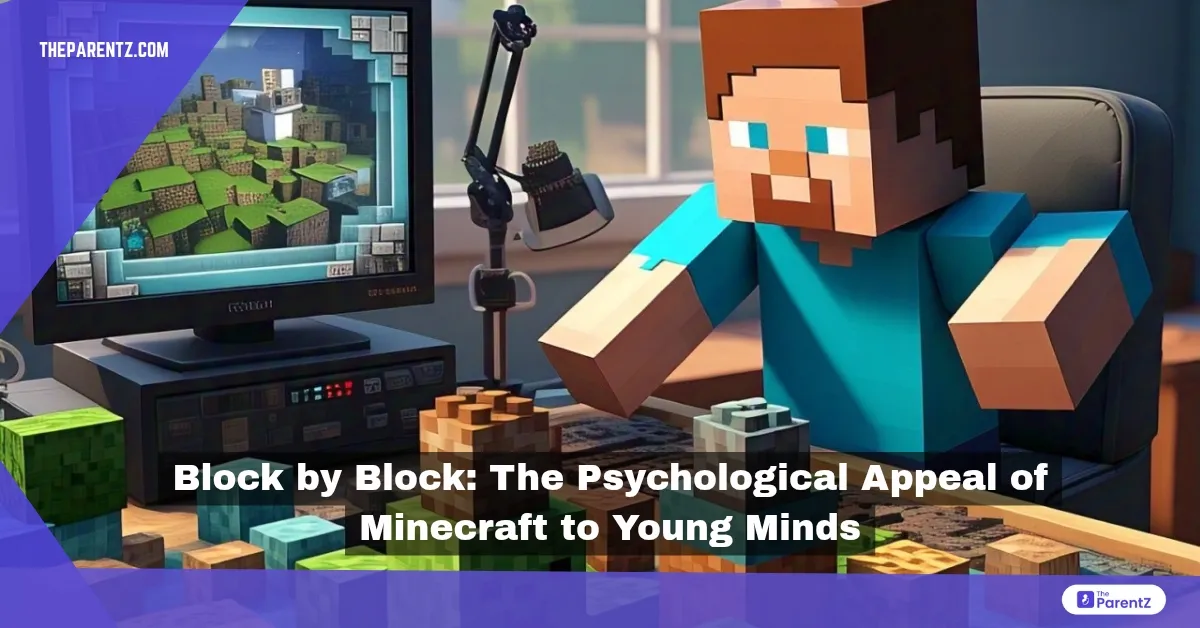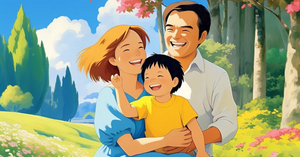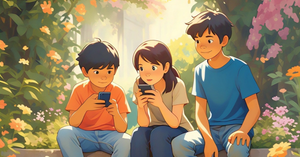If you've got kids, chances are you've seen them glued to Minecraft, building blocky worlds for hours on end. With over 204 million monthly players worldwide, this game has taken over children's screen time in a way few parents expected. "Just five more minutes" becomes an hour, and trying to pull them away often leads to meltdowns or negotiations that would impress a hostage negotiator.
But what makes this relatively simple-looking game so impossible for kids to put down? Understanding why Minecraft hooks young minds can help us guide our children's gaming habits without constant battles.
Kids Are Built to Build
Think about it: kids have always loved building things. From wooden blocks and sandcastles to LEGO sets and pillow forts, the urge to create something out of nothing runs deep in children.
As psychologist Peter Gray notes, mammals play in ways that develop critical survival skills. Predatory animals practice hunting, prey animals rehearse escape tactics, and humans—whose evolutionary success stems largely from our ability to build shelter and tools—naturally gravitate toward construction play.
Minecraft gives kids unlimited virtual materials to build with. No more running out of LEGO pieces or having to clean up a mess. In their digital world, they can create entire cities, underground bases, or fantasy castles without limitations.
What Minecraft Gives Kids That Real Life Sometimes Doesn't
1. Freedom to Make Their Own Choices
In a world where adults decide most things for kids—what to wear, when to sleep, what to eat—Minecraft offers rare complete freedom. There's no "right way" to play. Some kids build elaborate structures, others explore caves, and some enjoy farming or raising animals. The choices are entirely theirs.
This control feels amazing to kids who spend most of their day following someone else's rules. In Minecraft, they're the boss.
2. Getting Good at Something
Kids love the feeling of getting better at things. Minecraft starts simple—punch trees to get wood—but gradually introduces more complex possibilities. Your child probably started with a simple dirt house and worked up to intricate buildings with redstone contraptions (Minecraft's version of electricity).
This progression hits a sweet spot in our brains. The challenges are hard enough to be interesting but not so hard that they give up. When kids master new skills in Minecraft, they feel a real sense of accomplishment.
3. Hanging Out With Friends
"But they're just sitting there alone!" is something many parents think. The truth is that Minecraft is often very social. Kids build together on shared servers, chat while they play, and show off their creations to friends.
During COVID lockdowns, Minecraft became a digital playground where kids could still "meet up." Even now, it lets friends play together regardless of physical distance.
4. Always Something New to Discover
Minecraft's worlds are randomly generated, meaning each new game creates a completely different landscape to explore. There are always new cave systems, villages, or ocean monuments to discover.
This constant novelty keeps kids coming back. Their brains get a little hit of dopamine—the feel-good chemical—with each new discovery. It's like having an endless supply of surprise toys.
Minecraft's Educational Potential
Minecraft has proven to be a powerful educational tool. Its “Education Edition” is widely used in classrooms to teach STEM (Science, Technology, Engineering, Math) concepts through interactive learning environments. For example:
- Redstone mechanics introduce basic programming principles.
- Collaborative gameplay fosters teamwork and communication skills.
- Problem-solving tasks enhance critical thinking abilities.
Additionally, Minecraft has been used in urban planning projects and language learning exercises, showcasing its versatility as an educational resource.
Why It's So Hard to Stop Playing
If you've ever wondered why "just finish up" never works with Minecraft, here's why:
No Natural Stopping Points
Unlike board games or even many video games, Minecraft doesn't have clear endings. There's always something else to build, mine, or explore. Without obvious stopping points, kids struggle to find good moments to quit.
The "Zone" Effect
When kids are deeply focused on creating something in Minecraft, they enter what psychologists call a "flow state"—sometimes called being "in the zone." Time literally feels different when they're in this state. What feels like 10 minutes to them might actually be an hour.
Too Much Invested
After spending hours building an elaborate castle or underground base, kids feel emotionally attached to their creations. Their Minecraft worlds feel real and important to them, making it harder to walk away.
Helping Your Kids Find Balance
Understanding why Minecraft is so engaging helps us guide our kids without constant battles:
- Set Clear Limits, But Recognize the Value: Instead of seeing Minecraft as "just a game," recognize that it actually helps develop creativity, problem-solving skills, and sometimes even coding knowledge. Set reasonable time limits, but don't dismiss the activity as worthless.
- Help Them Find Good Stopping Points: Rather than pulling the plug in the middle of building something important, help kids identify good moments to save and quit—like after completing a room in their house or reaching a safe location. "Find a good stopping point in the next 10 minutes." This works better than abrupt transitions.
- Connect Their Virtual Building to Real-World Activities: Kids who love building in Minecraft often enjoy physical building toys, drawing blueprints, or even learning basic engineering concepts.
- Show Interest in Their World: Ask your child to show you what they've built. Let them explain how their complicated machinery works. This validates their interests while giving you a window into what they're actually doing on those screens.
Conclusion
Minecraft's hold on our kids isn't just about flashy graphics or marketing—it taps into basic human needs to create, master skills, explore, and connect with others. The game satisfies these needs in ways that are often hard to find in everyday life.
By understanding what makes Minecraft so compelling, we can work with its appeal rather than against it. Setting reasonable boundaries while acknowledging the game's benefits helps turn potential screen-time battles into opportunities for growth and connection.
Next time you see your child lost in their blocky world, remember—they're not just playing a game. They're expressing deeply human drives to build, create, and master their environment. With some guidance, their Minecraft obsession can be a positive part of growing up in our digital world.









Be the first one to comment on this story.